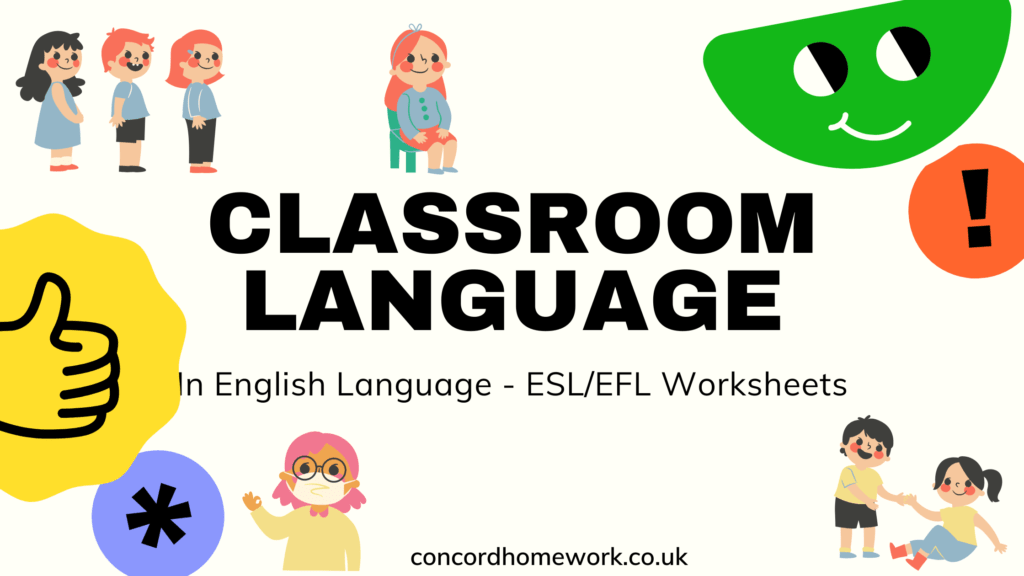Classroom Language Worksheet in English Language.
Cross the odd word out. Rewrite the words. Match the sentences.
This ESL EFL free worksheet contains exercises about classroom language. The worksheet has an answer key.
Understanding Classroom Language:
In the dynamic environment of the classroom, effective communication is essential for successful teaching and learning. Classroom language refers to the phrases, expressions, and vocabulary used by teachers and students to facilitate instruction, give directions, ask questions, and engage in discussions. Mastering classroom language enables smooth and productive interactions, creating an atmosphere conducive to learning and collaboration.
Common Classroom Language:
Below is a table listing some of the most common classroom language used by teachers and students:
| Expression | Usage | Example Sentence |
|---|---|---|
| Good morning/afternoon | Greeting at the beginning of the day/afternoon | Good morning, class! |
| Hello/Hi | Greeting | Hello, everyone! |
| How are you? | Asking about someone’s well-being | How are you today? |
| I’m fine, thank you. | Responding to “How are you?” | I’m fine, thank you. |
| What’s your name? | Asking someone’s name | What’s your name, please? |
| My name is… | Introducing oneself | My name is Sarah. |
| Can I go to the bathroom? | Asking for permission to leave the classroom | Can I go to the bathroom, please? |
| May I come in? | Asking for permission to enter the classroom | May I come in? |
| Please sit down. | Asking students to take their seats | Please sit down, everyone. |
| Open your books. | Instructing students to open their books | Open your books to page 10, please. |
| Close your books. | Instructing students to close their books | Close your books and listen, please. |
| Pay attention. | Encouraging students to focus | Pay attention, class. |
| Let’s get started. | Initiating a lesson/activity | Let’s get started with today’s lesson. |
| Raise your hand. | Asking students to signal they want to speak | If you have a question, raise your hand. |
| Can you repeat that? | Asking for clarification or repetition | Can you repeat that, please? |
| I don’t understand. | Expressing confusion or lack of comprehension | I don’t understand this exercise. |
| Excuse me. | Seeking attention or apologizing | Excuse me, may I ask a question? |
| Well done! | Offering praise for good work | Well done, everyone! |
| Keep up the good work. | Encouraging students to continue their efforts | Keep up the good work, everyone. |
| Any questions? | Inviting students to ask questions | Any questions before we move on? |
| Time’s up. | Signaling the end of an activity or task | Time’s up, pencils down. |
| Let’s wrap it up. | Concluding a lesson or discussion | Let’s wrap it up for today. |
Using Classroom Language:
you can use classroom language to create a positive and productive learning environment. By incorporating these expressions into your daily interactions, you can enhance communication, foster engagement, and support academic achievement.
In conclusion, mastering classroom language is essential for effective communication and successful teaching and learning. By using these expressions thoughtfully and consistently, teachers and students can create a welcoming and supportive atmosphere where everyone feels valued and empowered to participate.

